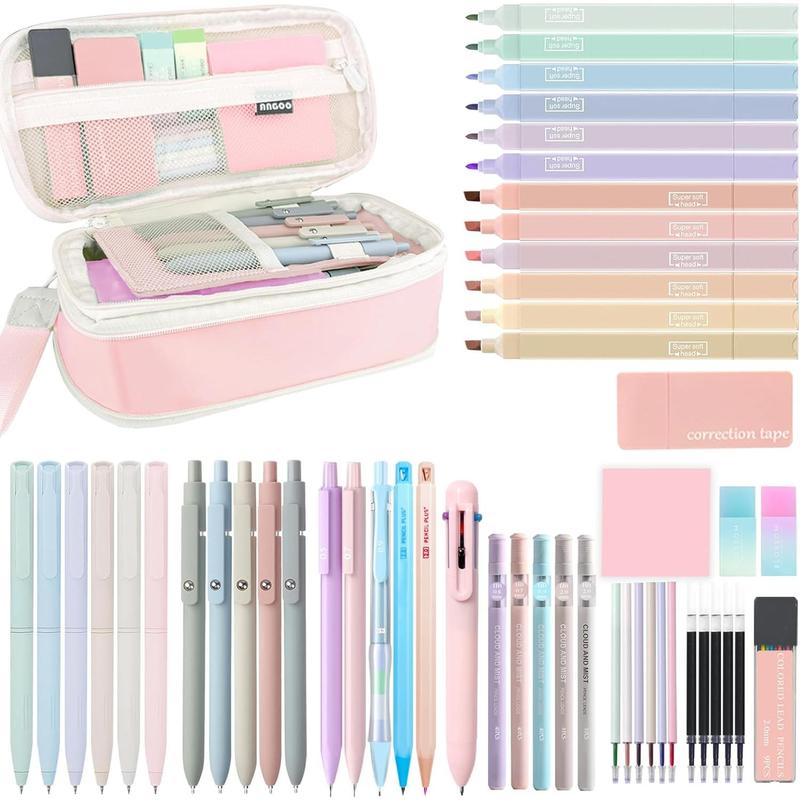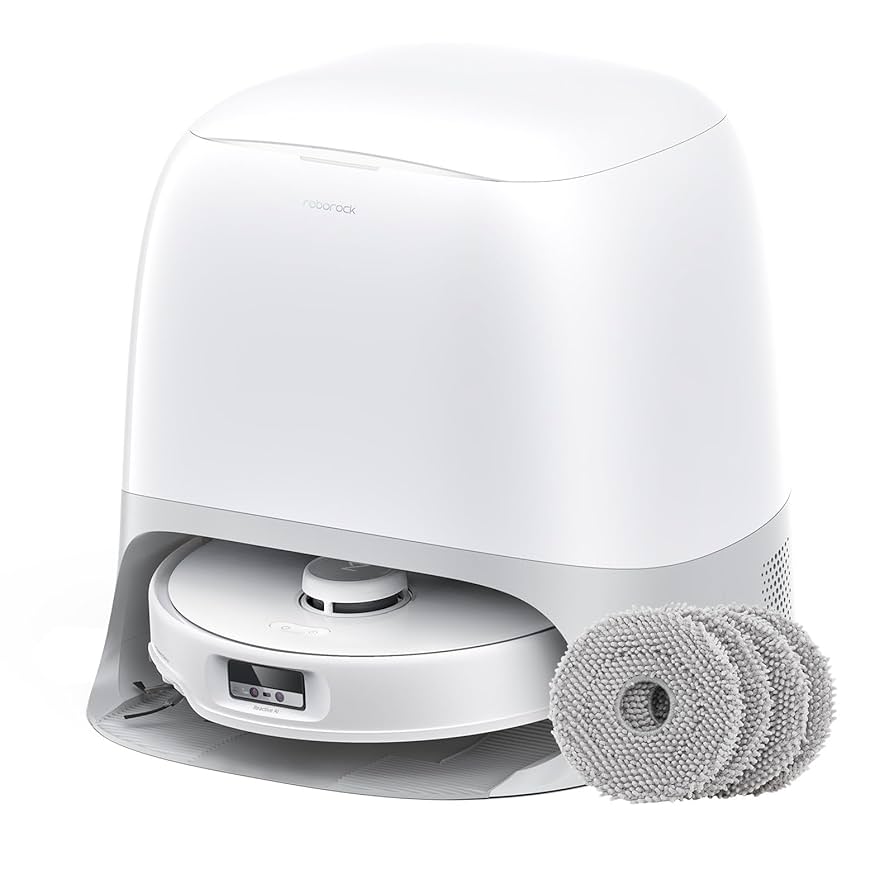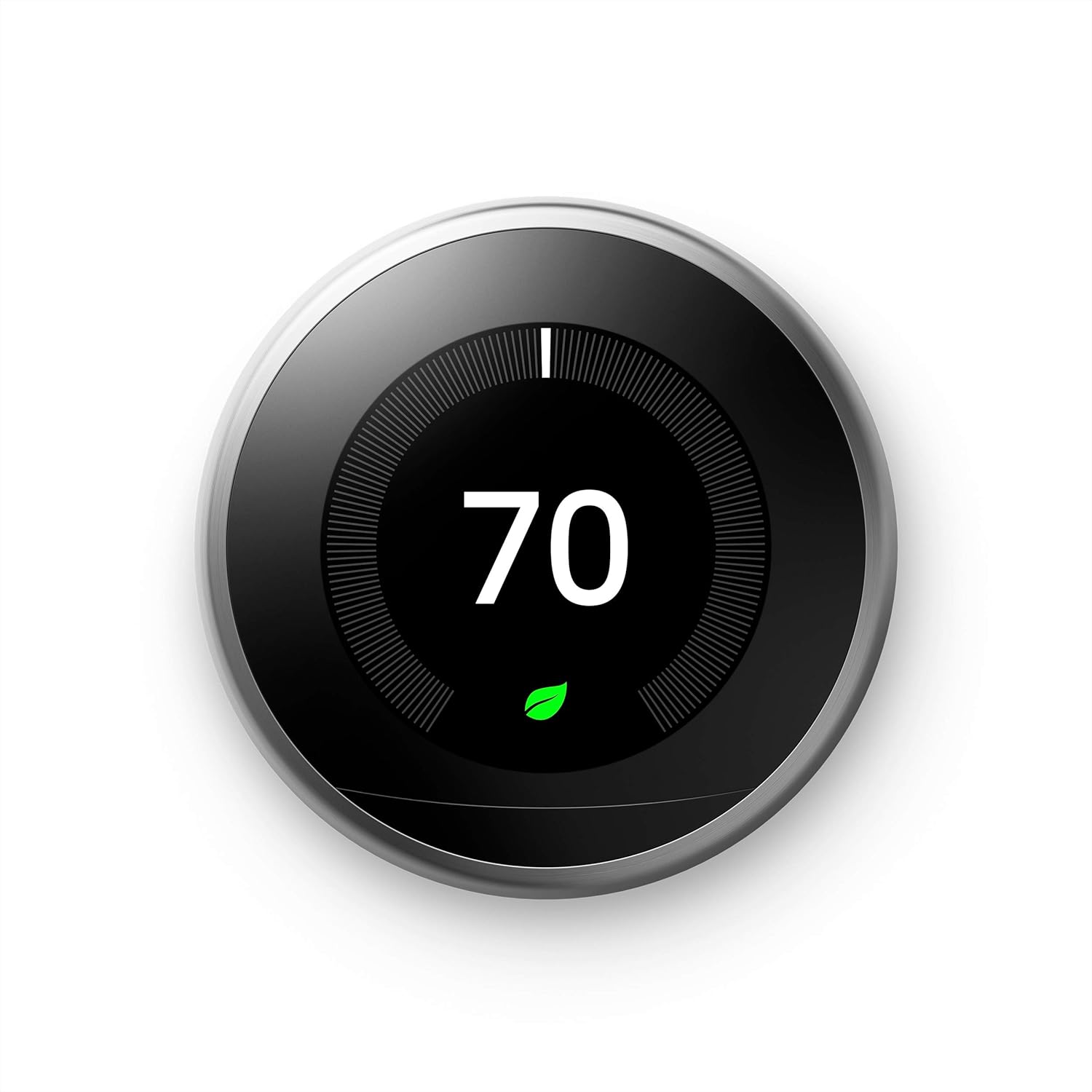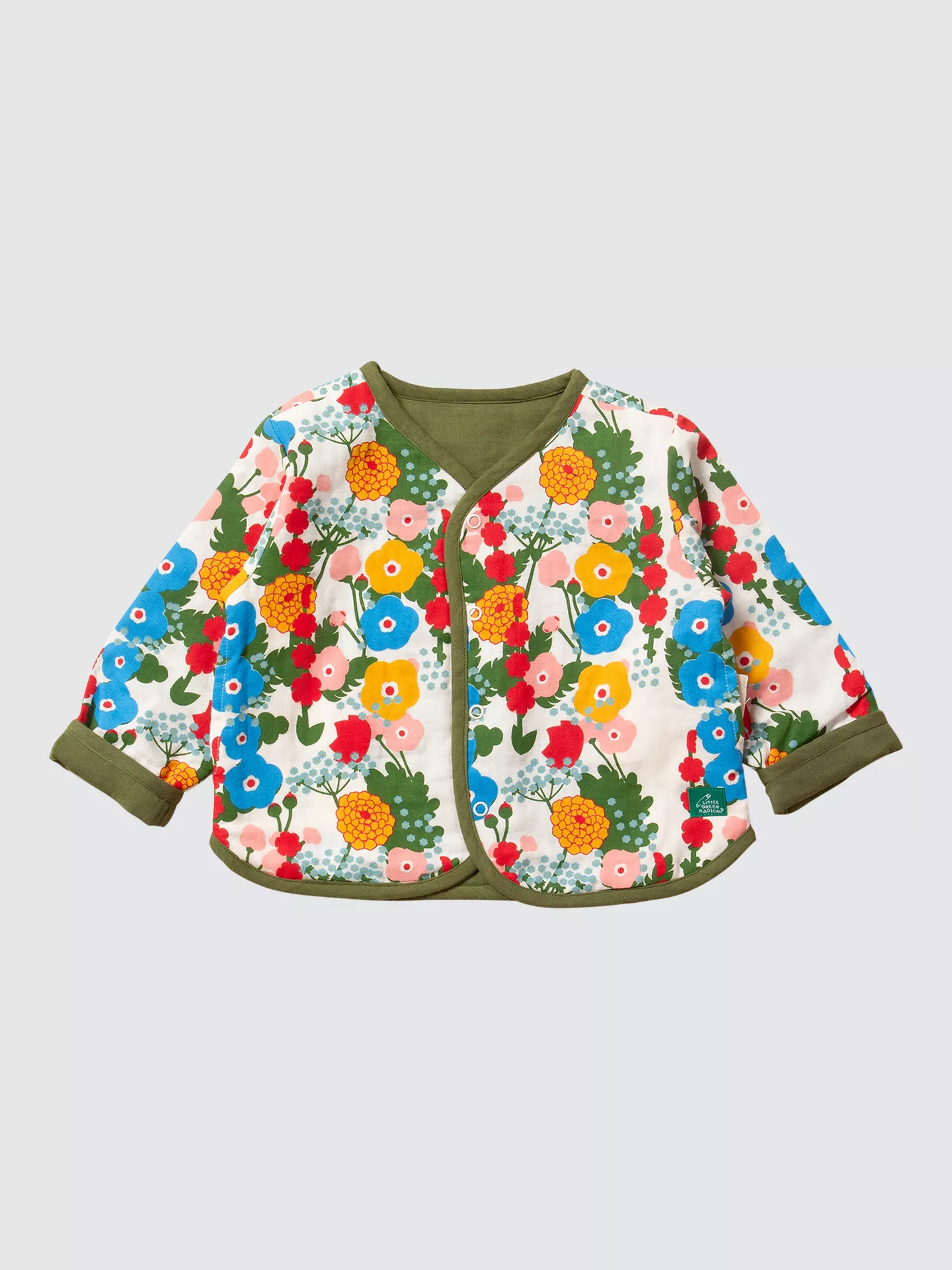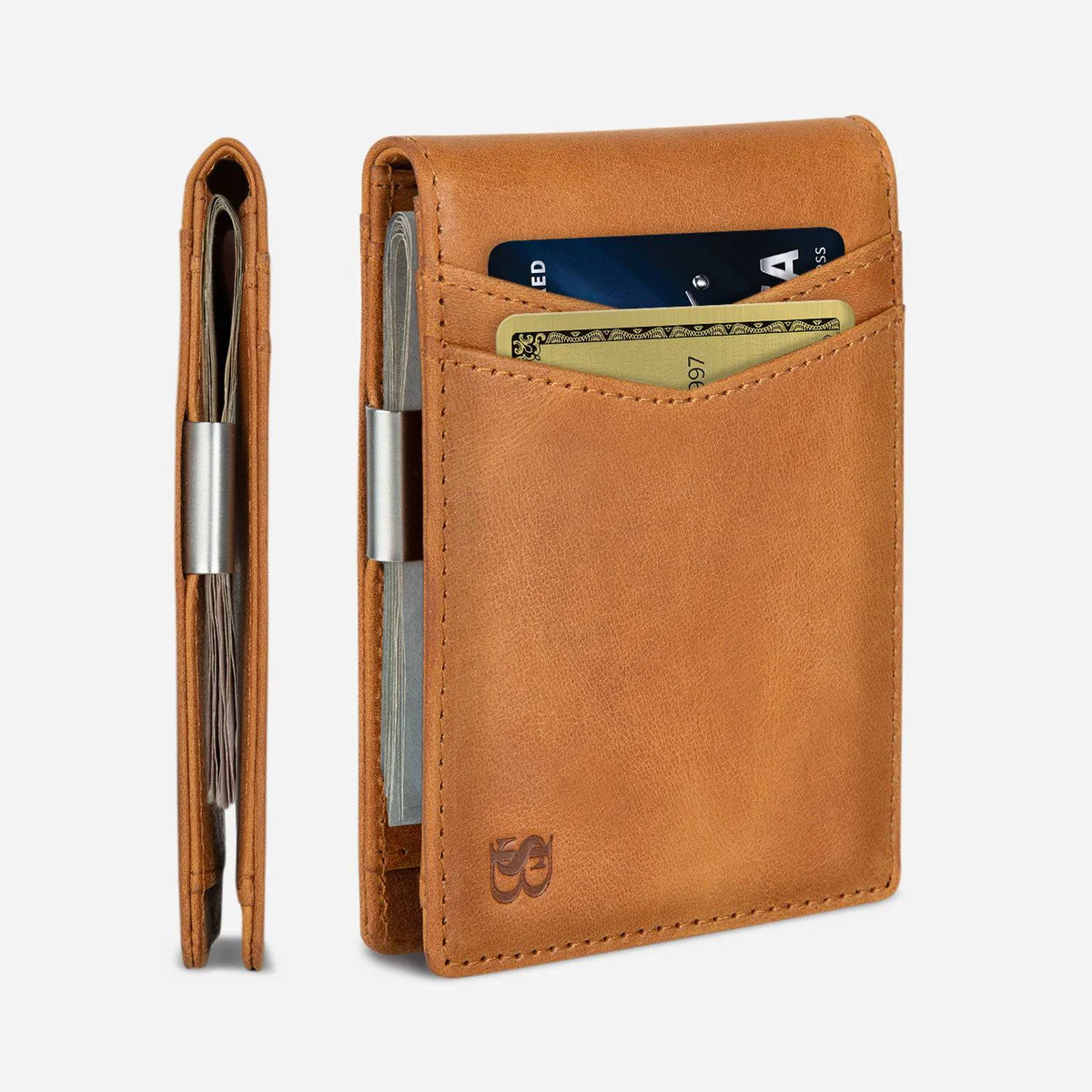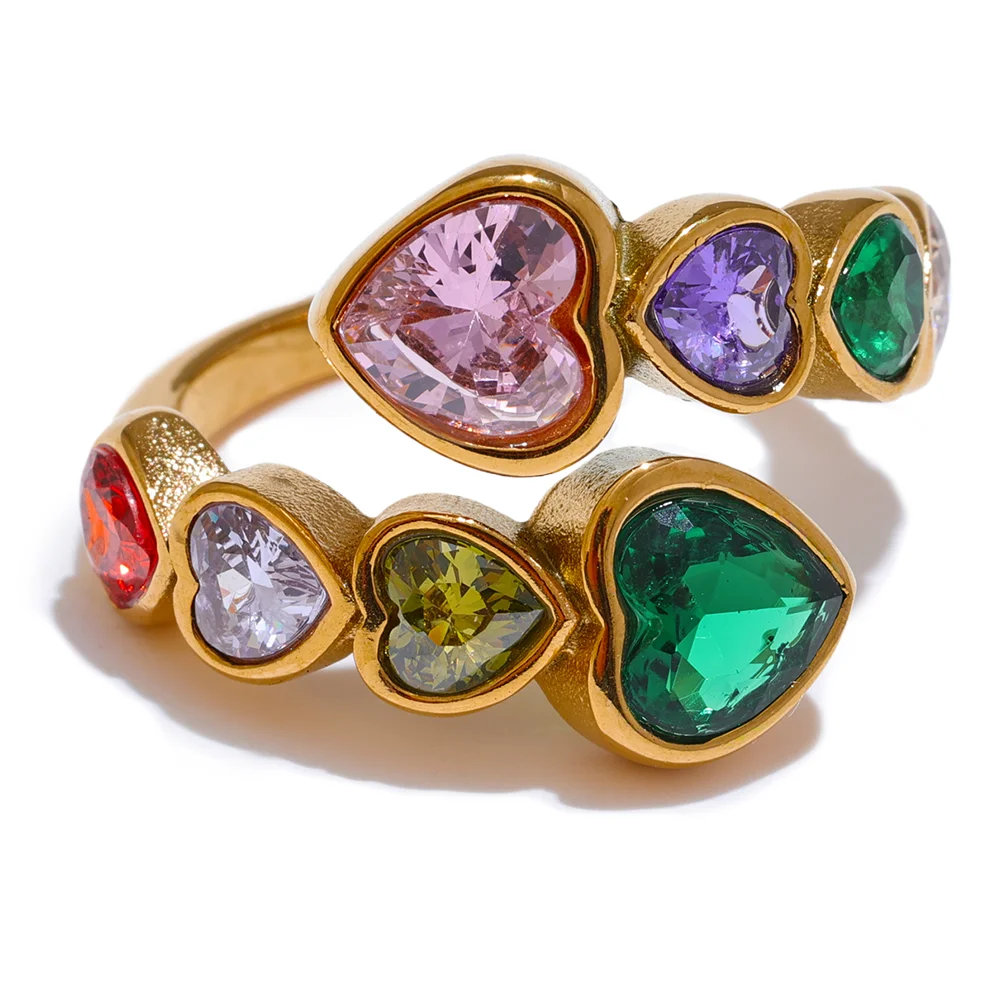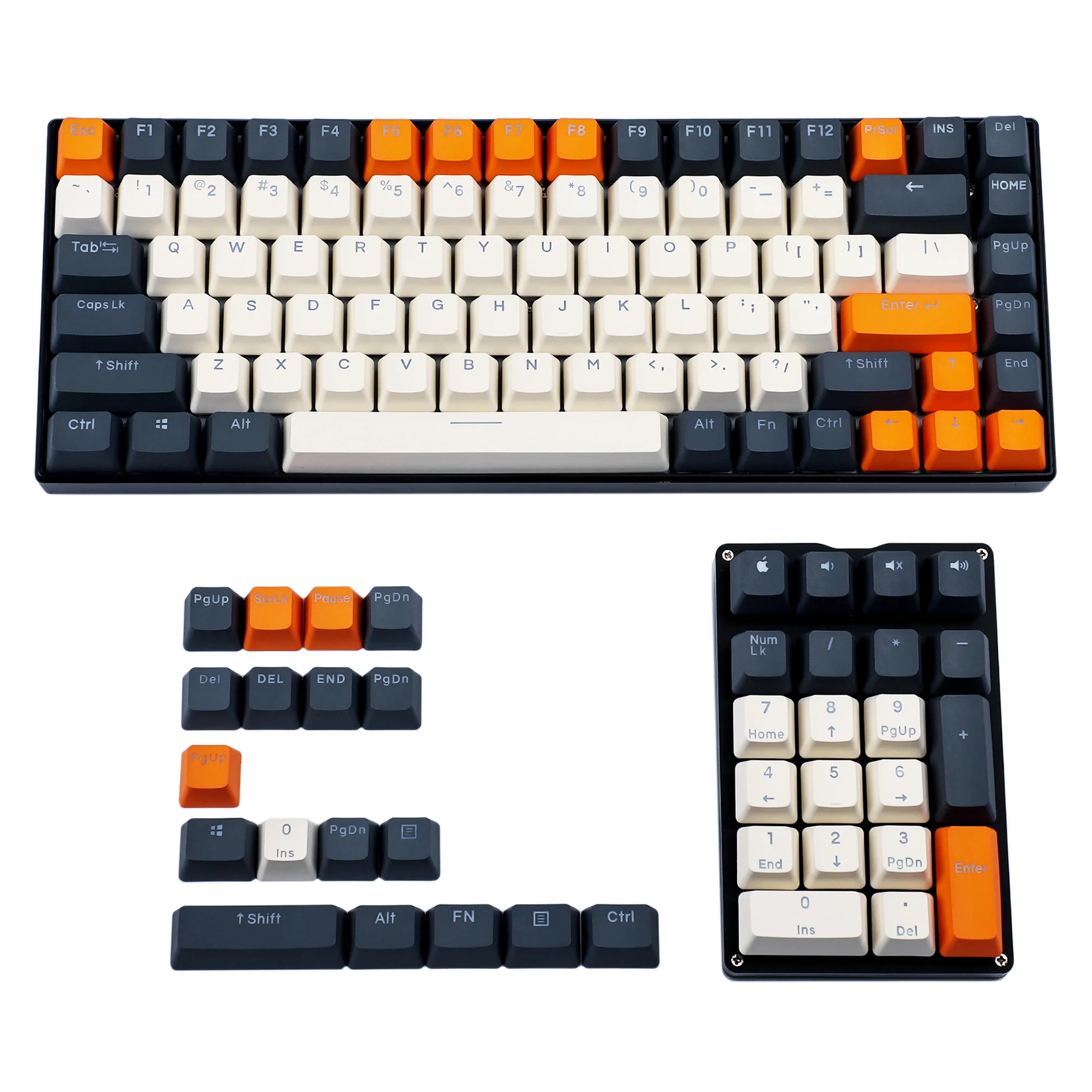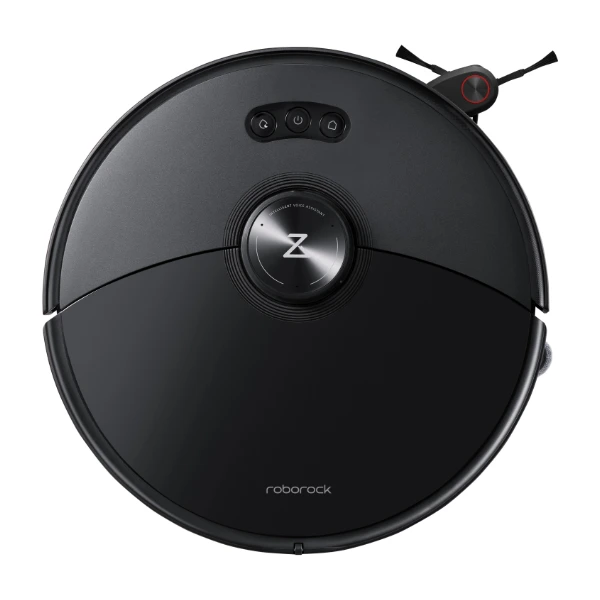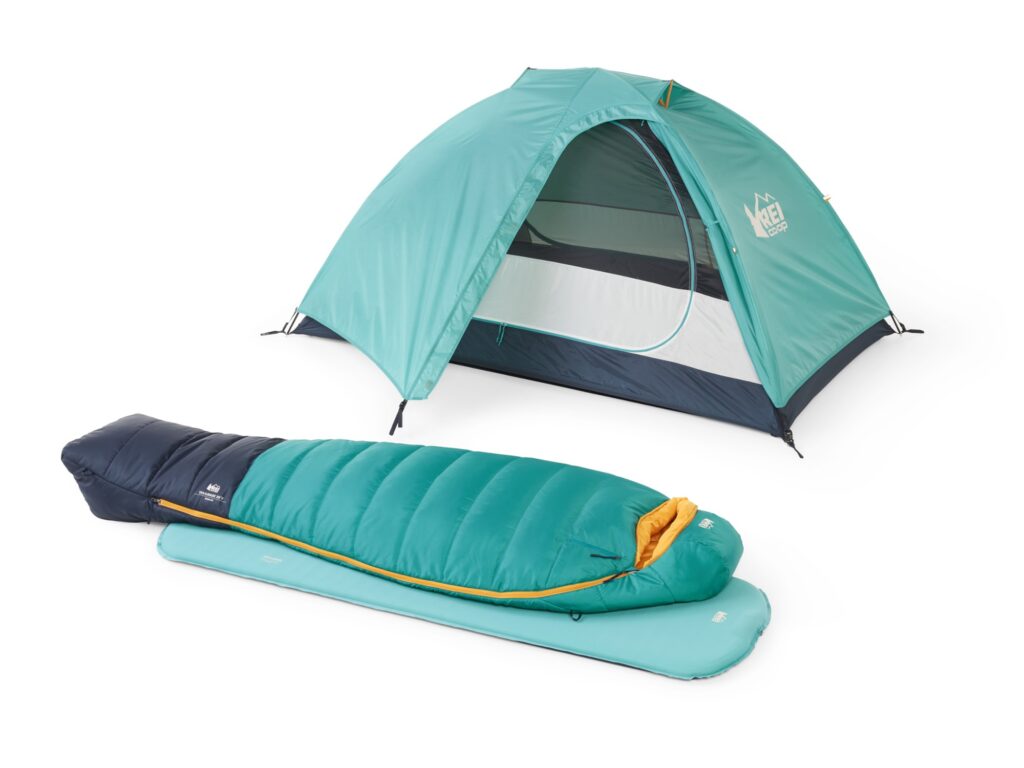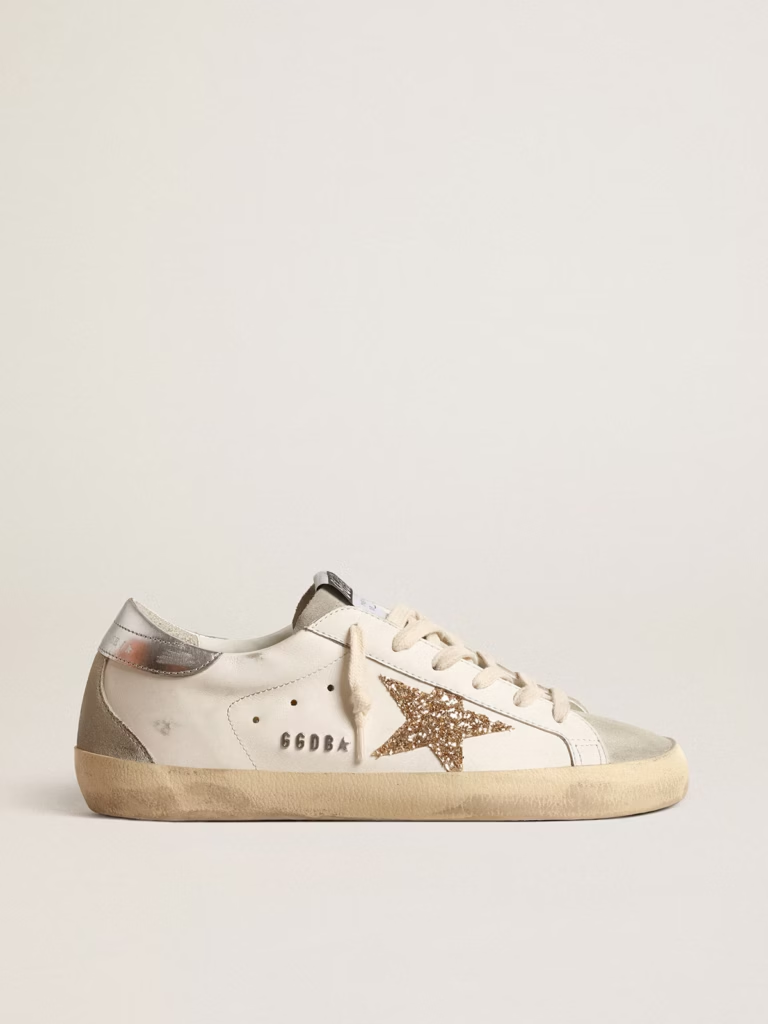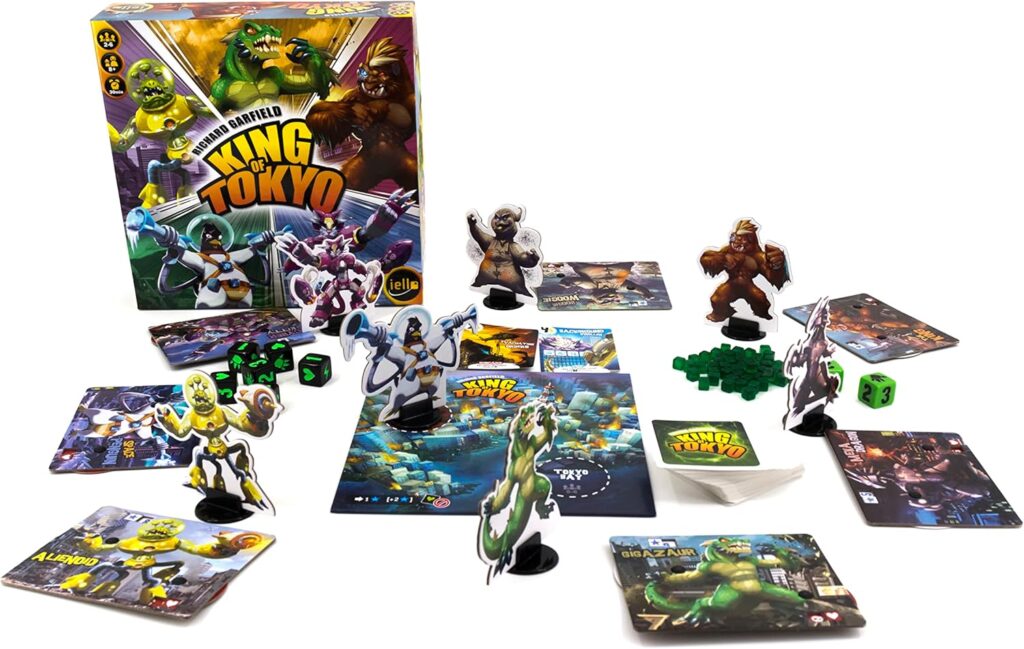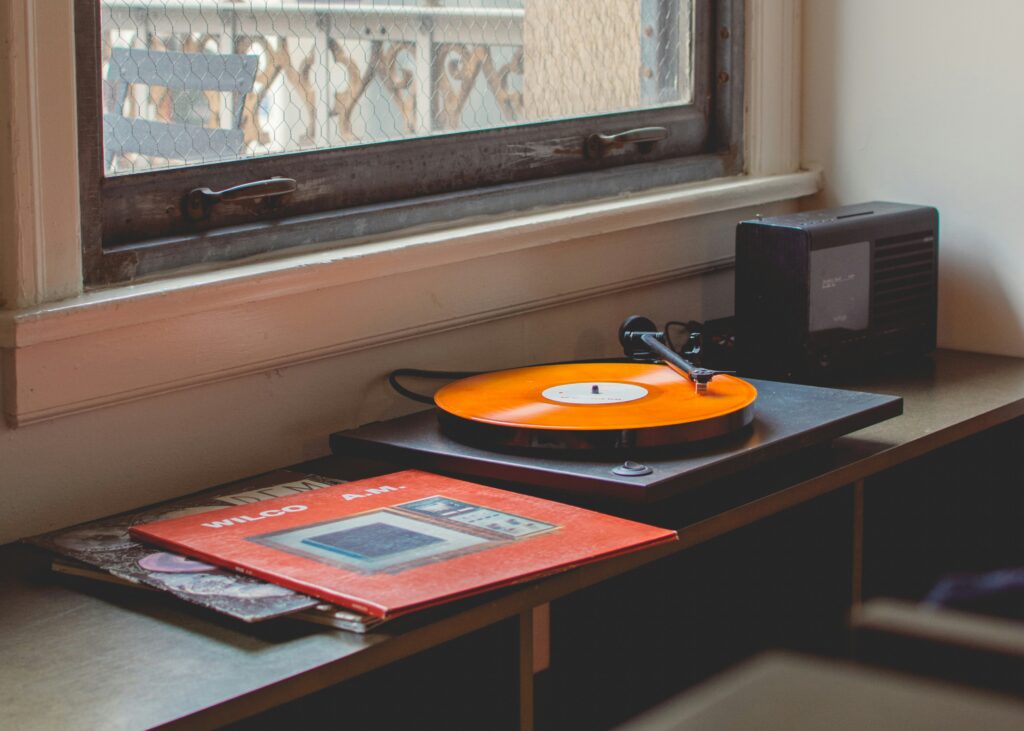Every great study session starts before the first page turns. Pens that glide instead of scratch, highlighters that don’t scream neon, a case that keeps everything in one place—these small choices add up to a day that flows. The Student Essentials 54-count set delivers that whole vibe in a single grab-and-go kit: pastel highlighters for calm, gel and mechanical pencils for precision, and a roomy pencil case that ends the “Where’s my pen?” scavenger hunt. This isn’t stationery for the aesthetic alone; it’s the toolkit that makes good habits automatic.
Shop the Student Essentials 54-Count Set
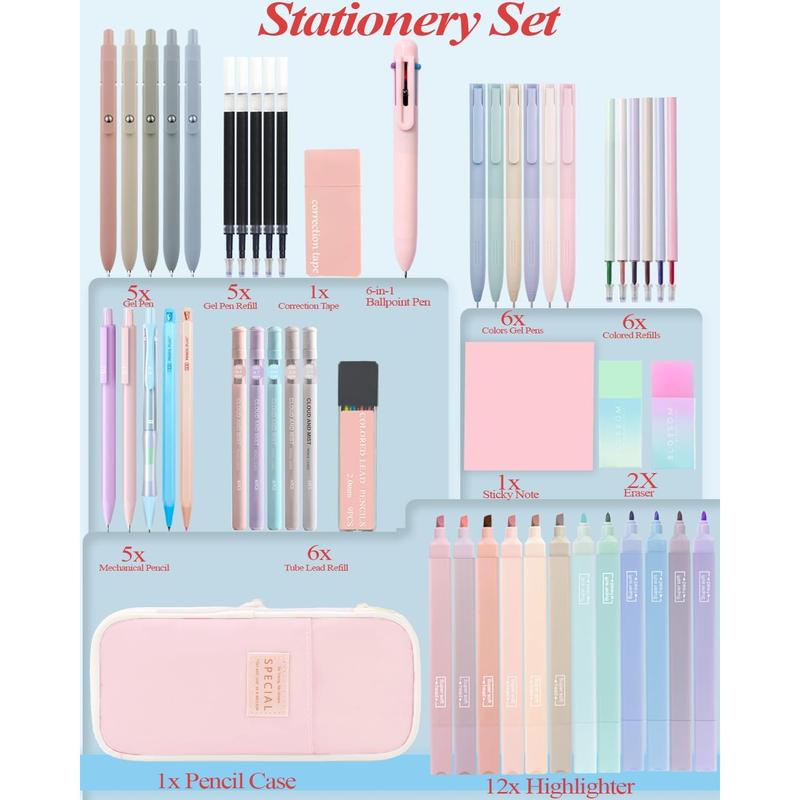
Why this set earns its spot in your bag
A good kit removes friction. When everything you need lives in one case—and every item plays well with the rest—focus arrives faster and sticks longer. Pastel highlighters guide the eye without turning notes into a carnival. Gel pens lay down smooth, readable lines that make re-reading painless. Mechanical pencils and spare leads make drafts and diagrams tidy. The case is the command center: unzip, lay out, lock in, go. Packed once, ready daily.
Build your study flow (and keep it rolling)
Start with a five-minute prep ritual before any class or homework block. Take out the Student Essentials case, set out two gel pens (primary + backup), one mechanical pencil, and your two most-used highlighters. Everything else stays zipped, so the desk stays calm. After you finish, reset the case immediately; “reset now” beats “hunt later.”
Shop the Student Essentials 54-Count Set
Color-coding that your future self will thank you for
Color is how you teach your notes to talk back. The trick is consistency, not complexity. Pick a four-color system and use it across every class so your brain doesn’t reboot with each notebook.
- Pink = concepts. The big ideas. If you only skim later, pink tells you the story arc.
- Blue = definitions & formulas. Anything you’d put on a cheat sheet lives here.
- Green = examples. Worked problems, case studies, lab steps.
- Yellow = to-do flags. Gaps, questions, follow-ups you’ll tackle next session.
Mark as you go, lightly. Pastels keep pages calm; your eyes stay fresh on long reads. Bonus: color consistency makes flashcards faster because you already know what to capture.
Notes that read like a map, not a maze
Whether you’re Team Cornell or Team Outline, the Student Essentials mix makes structure easy. Start with pencil for the skeleton (titles, bullets, diagrams), then switch to gel pen for the meat (explanations, takeaways). Highlight only after the ink dries. If you’re doing Cornell, pencil the left column prompts first—“Define,” “Prove,” “Explain why”—so you’re writing to a question, not dumping thoughts. If you prefer an outline, use gel pen for A/B/C levels and pencil for quick sub-bullets you might delete.
Micro-move that changes everything: write section headers in a consistent gel-pen color and add a tiny square checkbox at the end of each major idea. During review, check off when you can explain that idea aloud without peeking. Visible progress, less stress.
Make the pencil case your mobile command center
The case is more than storage; it’s your dashboard. Keep one side “live” (today’s tools) and one side “reserve” (spares and niche colors). A small mesh pocket can host sticky flags, a mini eraser, and two spare leads. Every Sunday night, audit: toss dried pens, top up leads, and swap in a fresh highlighter if one’s fading. This ritual takes three minutes and saves thirty during the week.
A quick pack layout that just works:
- Front slots: 2 gel pens (primary + alt color), 1 mechanical pencil.
- Elastic band: 2 highlighters (main + accent).
- Mesh pocket: flags, eraser, spare leads.
- Back compartment: the rest of the set, zipped.
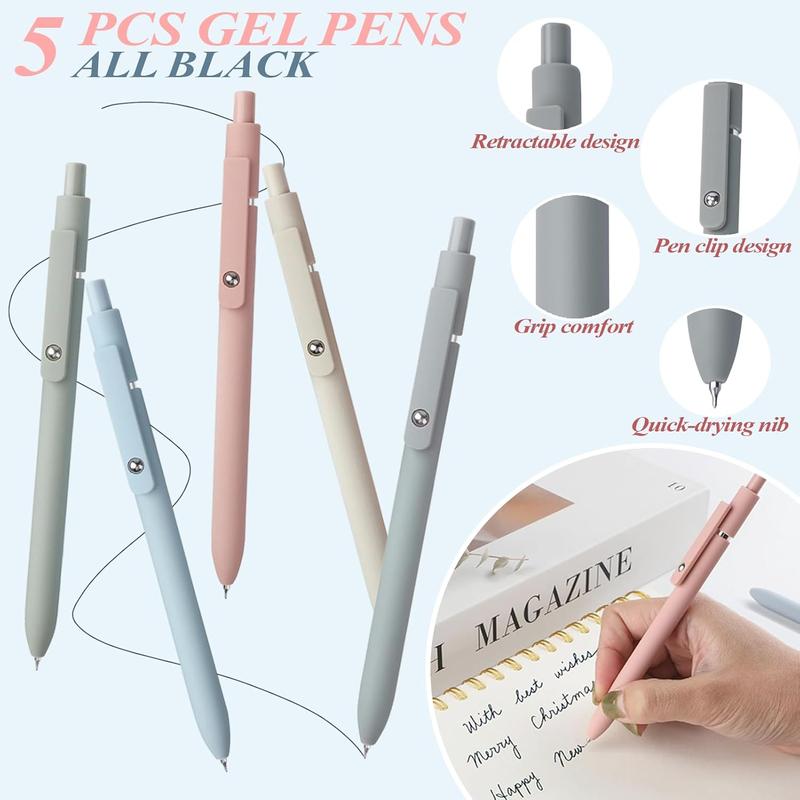
Study blocks that respect your brain
Focus comes in waves. Lean into it. Try a 25–5 rhythm (25 minutes on, 5 off) or 40–10 if you’re in a groove. Before pressing start, set one micro-goal per block—“summarize section 4,” “finish two problem types,” “outline the lab.” Lay out only the tools you’ll use for that goal; everything else stays zipped. When the timer ends, highlight your summary sentence in green and step away. Movement is part of studying—water, stretch, sunlight, back.
Short, targeted bullets for tough days:
- Start with the easiest two minutes (copy the problem, label the diagram).
- Switch mediums (pencil to pen) to reset attention without leaving the desk.
- End a block by writing tomorrow’s first step on a sticky and tucking it into the case.
From class to homework without losing momentum
Right after class, before your brain tab closes, take ninety seconds to “seal” the page: draw a line, write a one-sentence summary, highlight the concept color, and star any to-dos in yellow. If a formula landed in blue, copy it again cleanly; muscle memory matters. When you open the notebook later, your past self has already cued the next move.
Shop the Student Essentials 54-Count Set
Diagrams and drafts without the mess
Mechanical pencils are your best friend for anything spatial: graphs, lab setups, geometry, mind maps. Sketch lightly, then trace final lines with gel pen for contrast. Use green to mark each step of a multi-stage process—1, 2, 3 on the diagram—so you can teach it back to yourself later. If you make a mistake (you will; welcome), box the incorrect step in yellow and write “fix:” with the corrected move. You’re training your brain to spot patterns and errors quickly.
Flashcards that don’t waste paper (or your patience)
When you make cards, follow the same color story. Blue for terms on the front, pink for the concept sentence on the back, green for one example. If you’re short on time, write only the example in green and highlight a keyword; your brain will reconstruct the definition under pressure. Slide finished cards into the case pocket so review can happen in line, on the bus, wherever you exist between places.
Group work without chaos
Bring the Student Essentials kit to group study and assign color roles: one person highlights concepts (pink), one flags gaps (yellow), one writes clean definitions (blue), one adds examples (green). Rotate every twenty minutes so everyone touches each type of thinking. End the session by each person writing one “teach-back” sentence in gel pen—if you can explain it, you own it.
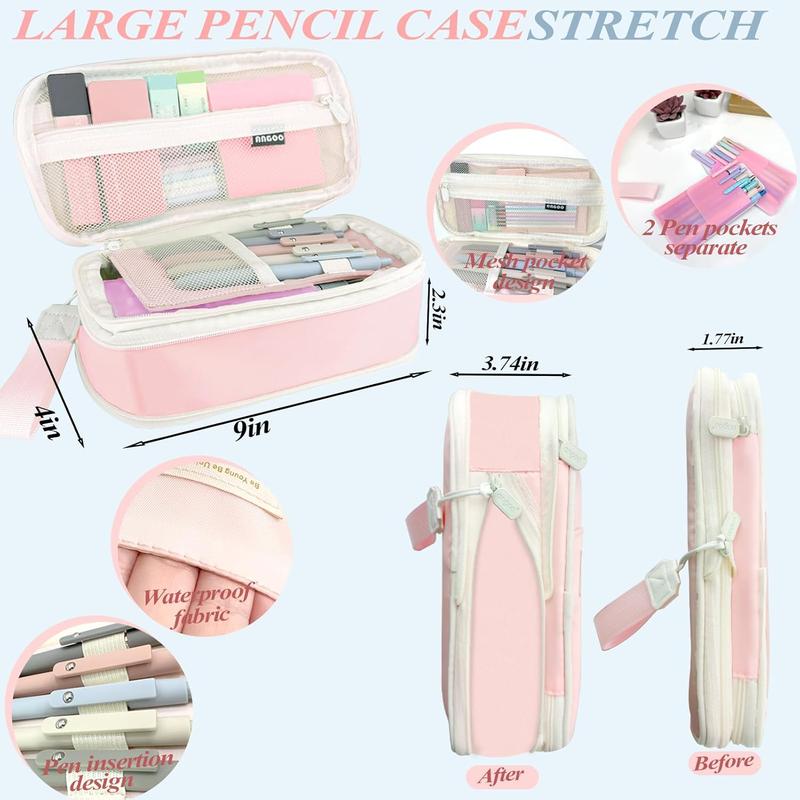
Care and maintenance (because pens and peace are linked)
Treat your tools kindly and they’ll treat your notes kindly. Cap highlighters between paragraphs, not chapters. Store the case flat in your bag so tips don’t leak or bend. If a gel pen starts skipping, scribble on scrap; if the skip persists, retire it. Wipe the case weekly so ink dust doesn’t smudge your pages. Small upkeep, big calm.
For different ages and study styles
Middle schoolers thrive on the novelty of color—start with two colors and add more as habits form. High schoolers can dial in Cornell or outline systems and use the kit to standardize across five classes. College students: keep the case on your laptop like a dock; library tables get messy fast, your case keeps the zone small. If you’re neurodivergent and visual cues help, tape your color key inside the front cover of every notebook so the system travels with you.
Test week, but make it manageable
Seven days out, switch into review mode. Scan notes for yellow flags first; those are your fix-it list. Rewrite blue definitions cleanly with one green example each, then cover and recite. The night before, highlight only the pink big ideas and stop. Rest is part of the plan. Morning of, read your one-sentence summaries and breathe. Your notes are quiet, clear, and familiar—on purpose.
Conclusion
Organization is not a personality trait; it’s a set of repeatable moves. The Student Essentials 54-count set makes those moves feel natural—colors that guide, pens that cooperate, a case that keeps everything where it belongs. Pick a simple color code and stick to it. Build tiny rituals: prep, focus, reset. Keep your case as the mobile HQ that follows you from desk to lecture hall to library to kitchen table. When your tools are this dialed, your brain is free to do the real work: understanding, connecting, creating.
Shop the Student Essentials 54-Count Set
FAQ
- What’s the simplest color system to start with?
Use pink for concepts and blue for definitions. Add green for examples once the habit sticks; yellow flags to-dos. - Gel pen or pencil for math?
Pencil for setup and working; gel pen to box final answers. Mistakes happen—pencil keeps your page neat. - How many pens should live on the desk at once?
Four tools max (two pens, one pencil, one highlighter). The rest stay zipped to protect focus. - Do pastels highlight enough for low-light study?
Yes—pastels guide without glare. If lighting is dim, angle a lamp toward the page and layer a second pass lightly if needed. - How do I stop notes from becoming a rainbow?
Commit to one meaning per color. If a sentence could be two colors, pick the dominant role and move on. - What if my gel pens smear?
Let ink dry for a few seconds, then highlight. Left-handers: tilt the page slightly and move your hand under the writing line. - How often should I restock leads and flags?
Weekly “Sunday reset.” Top up, toss duds, wipe the case, breathe easier. - Best quick review move between classes?
Draw a line, write a one-sentence summary, and highlight it green. Future-you will adore you. - Can the case double as a mini desk caddy?
Yep. Unzip and lay it open at the top of your notebook—tools on the left, page on the right, zero desk sprawl. - How do I keep the habit going mid-semester?
Tie the case to non-negotiables: it sits with your laptop, travels to every class, and opens before you touch your phone. Ritual over willpower, always.

